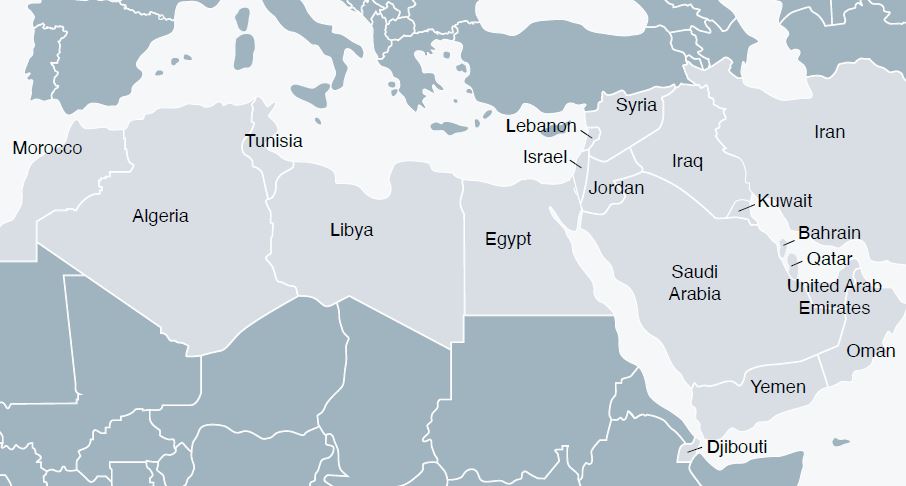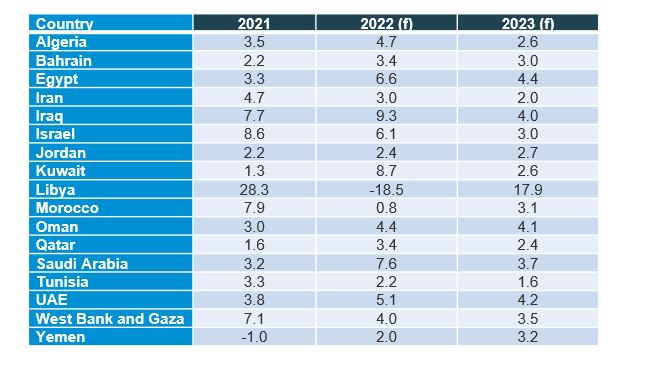- Home
- Middle East and North Africa (MENA): Economic overview
Middle East and North Africa (MENA): Economic overview
MENA is a diverse geographical region with many countries and a wide gross domestic product (GDP) range.
MENA region economies are forecast to grow by 5.4% in 2022 (the fastest rate since 2016) and by 3.5% in 2023.
GDP growth will be uneven across country groups (World Bank 2022). Growth in oil-exporting Gulf Cooperation Council (GCC) countries, such as Saudi Arabia, Oman, Qatar and the United Arab Emirates, is expected to rise faster, as oil and gas prices rise.
Many other MENA countries will struggle to overcome the effects of the pandemic. Like the global economy, economic crises will increase import bills, especially for food and energy, and worsen currency depreciation, further fuelling inflation and dampening growth.
Growth in real GDP per capita (arguably a more accurate measure of changes in living standards) for MENA is expected to accelerate to 3.9% in 2022 before slowing to 2% in 2023. Once again, growth is uneven among the country groups.
GDP per capita growth for GCC countries is expected to accelerate to 5.5% in 2022 before slowing to 2.4% in 2023. For developing oil exporters, the equivalent rates are 2.5% and 1.1%, respectively.
Table 1. Real GDP growth in selected MENA countries* (year-on-year % change)
*For which data is available. (f) = forecast change
Source: IMF
MENA Countries

Continue reading about the MENA market
Market access and barriers to trade


